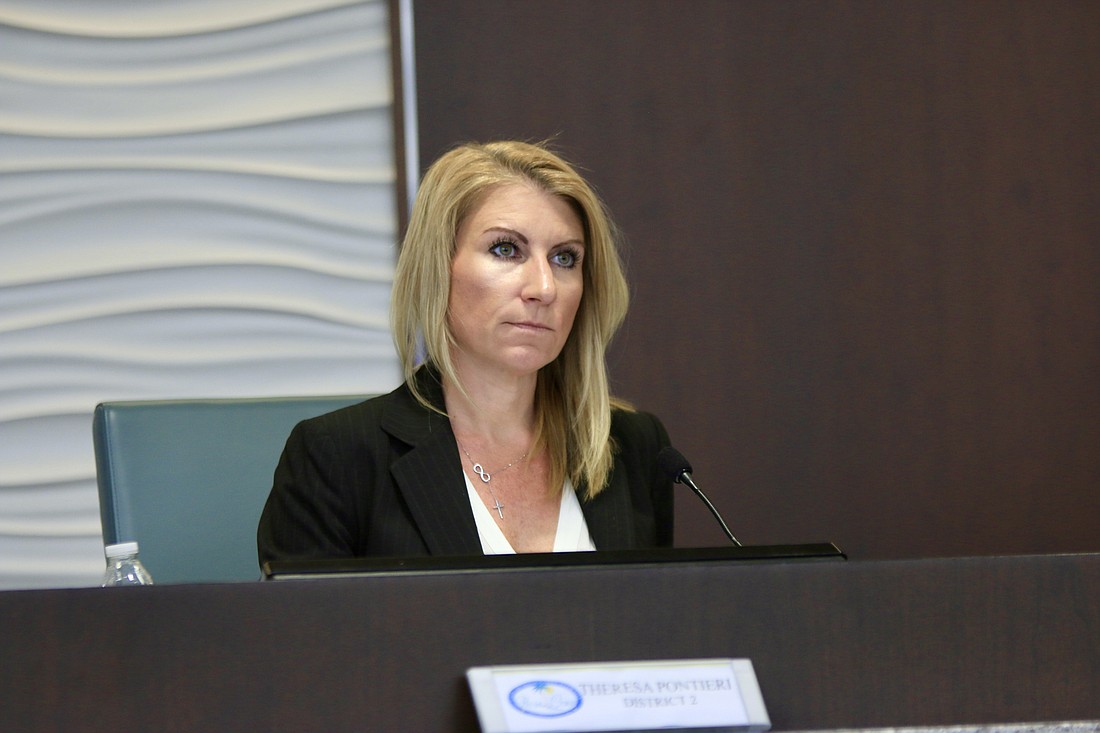- January 1, 2025
-
-
Loading

Loading

Palm Coast has drafted its first list of priorities for the next budget cycle, including a discussion on potentially adopting another rollback millage rate.
The Strategic Action Plan priority items provide a guide line for how and what items are prioritized in the new budget. Vice Mayor Ed Danko proposed a full millage rate rollback for the 2025 fiscal year, but the idea was met with skepticism from a few council members at the April 23 workshop meeting.
All four other council members said they would like to see a full millage rollback rate for the 2025 budget, but council member Theresa Carli Pontieri said the residents want improved infrastructure more than a "$30 decrease on property taxes."
“We can’t afford a full rollback," she said.
Pontieri said the feedback she has heard from residents is that they want their roads fixed or their swales repaired faster, while staff has repeatedly told the council there is not enough funding to improve those programs.
“As I look at this right now," she said, "I look at our infrastructure needs, it is to me, a very real issue that we have and we cannot afford a rollback as we sit here right now.”
Mayor David Alfin said he would like to see a revenue and impact analysis before deciding on whether or not a rollback is possible. He called the goal of a rollback millage rate a "lofty" one.
“Without having seen the numbers yet it's hard for me to be assured that we are providing sufficient funding for our current infrastructure needs, and that would be a requirement,” Alfin said.
The City Council did approved a rollback millage rate for the 2023-2024 budget last July. That was the first time since the 2022 budget that the city has changed its millage rate at all and the first time in a decade that the city had adopted a rollback rate.
Both council member Cathy Heighter and Nick Klufas said that the money for a rollback millage would need to be found elsewhere. Heighter said she'd like to see the city “ find ways to cut back on some of the other budget items.”
Klufas said finding alternative forms of revenue — like exploring solar power initiatives to save costs and earn additional money — would be key to saving money for residents but also covering the city's needs.
"It's going to be increasingly more difficult to find more and more places to cut," Klufas said. "If we can find ways to try to offset some of the the fixed costs of operating our city, we may be able to accomplish both."
Among the other suggested SAP priority items, Alfin also suggested the city upgraded its communication response to residents. But Pontieri suggested staff make that a broader technology analysis, to include the possibility of building an app for the city to improve communications both from residents and staff as complaints are filed and then addressed.
Danko said he loved that idea, likening it to how Amazon takes a photo of a packaged when it's delivered.
“Like, yes, we just fixed your pothole, boom, there's the result,” he said.
The SAP items the council listed can change between now and officially adopting them and the council is set to review them again at the May 25 workshop. Below is a list of all 12 objectives the council has tentatively landed on.
Objective #1: Identify savings and conduct a revenue and impact analysis to fund a property tax rollback for the coming fiscal year
Objective #2: Conduct a solar evaluation of city assets to identify opportunities to utilize this energy source and achieve cost savings
Objective #3: Design and implement a citywide plan for road repair and road safety
Objective #4: Design and implement a citywide plan for swale maintenance and performance
Objective #5: Continue saltwater canal dredging initiative
Objective #6: Optimize citizen information from and engagement with city government and consistently ensure an excellent customer service response
Objective #7: Design and produce a capital improvement plan focused on technology for city government
Objective #8: Enhance current economic development efforts to result in better paying jobs and attracting major employers such as healthcare
Objective #9: Enhance transit options and citizens awareness of these services in partnership with the county government
Objective #10: Enhance housing options for the workforce and senior citizens by conducting an assessment of current housing stock and considering available public policy options to increase supply
Objective #11: Identify a dedicated funding source for arts/cultural/historical activities and facilities
Objective #12: Implement the Parks Master Plan